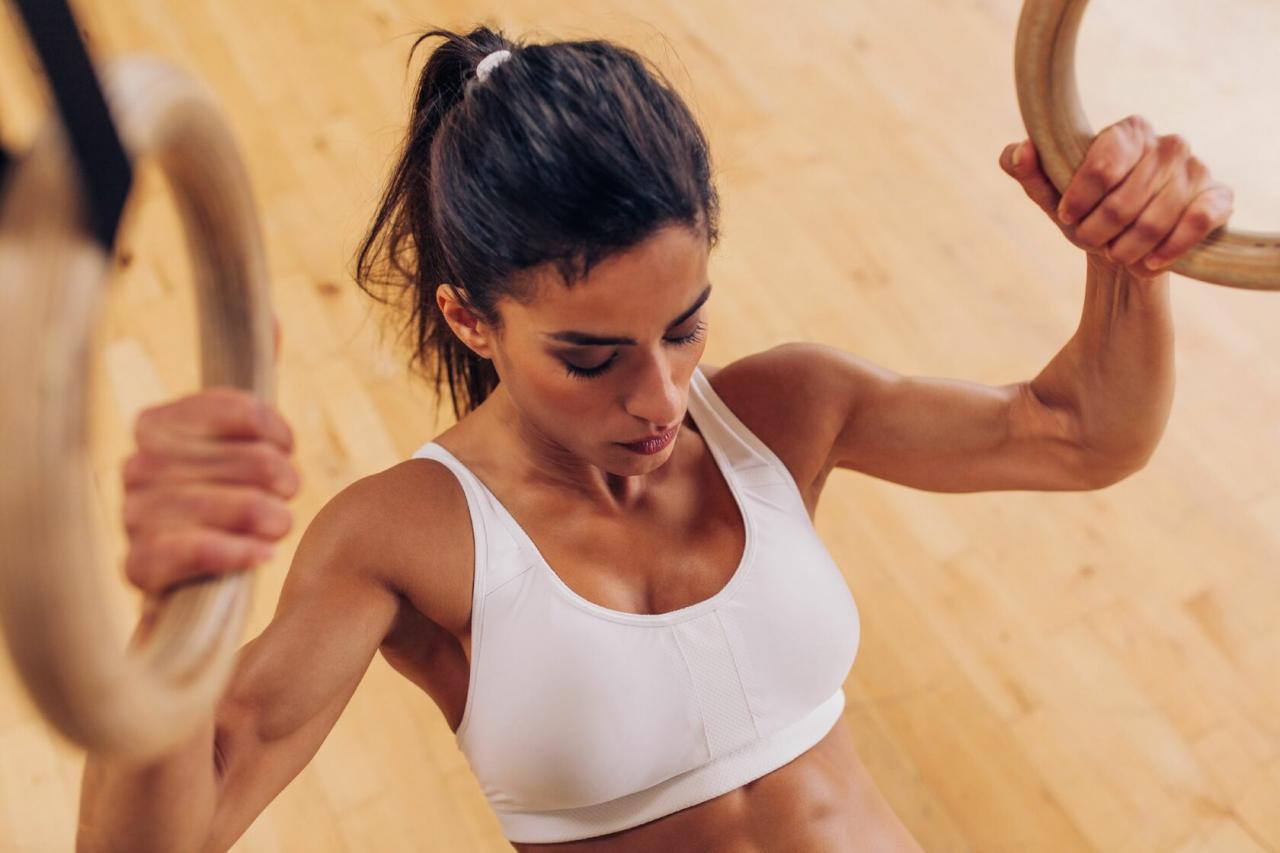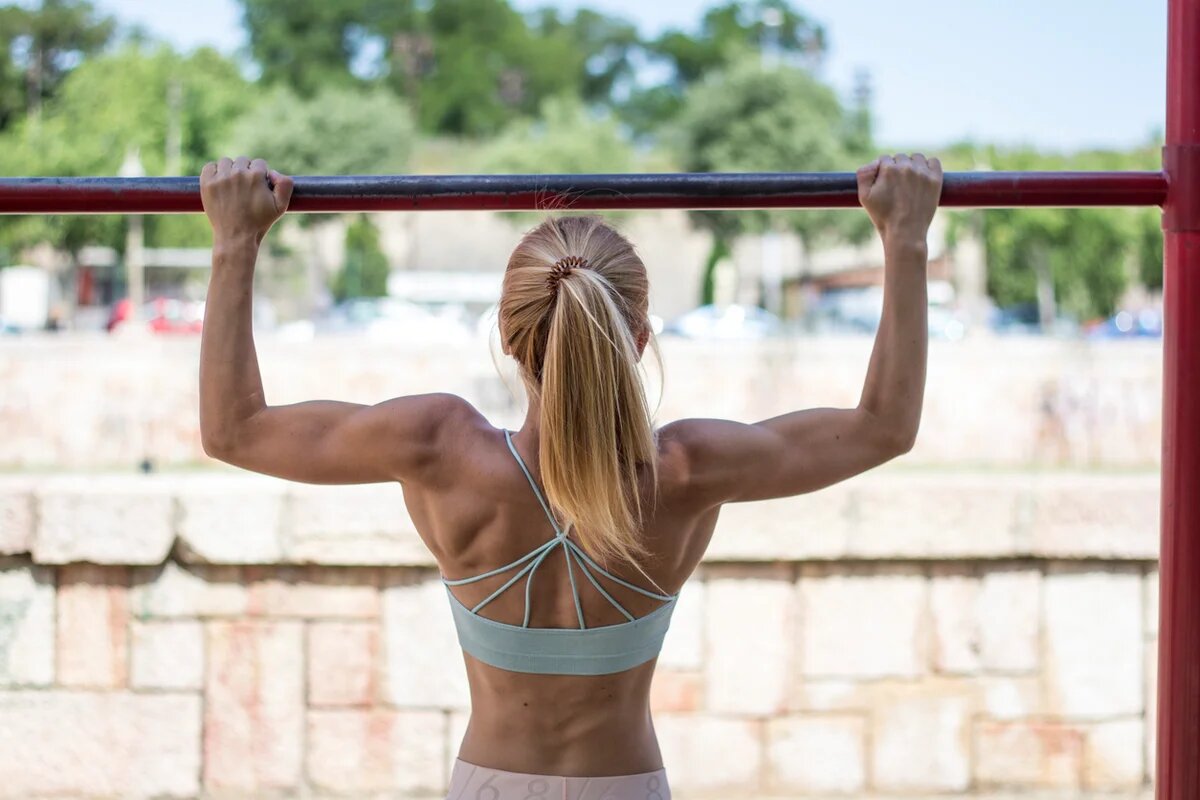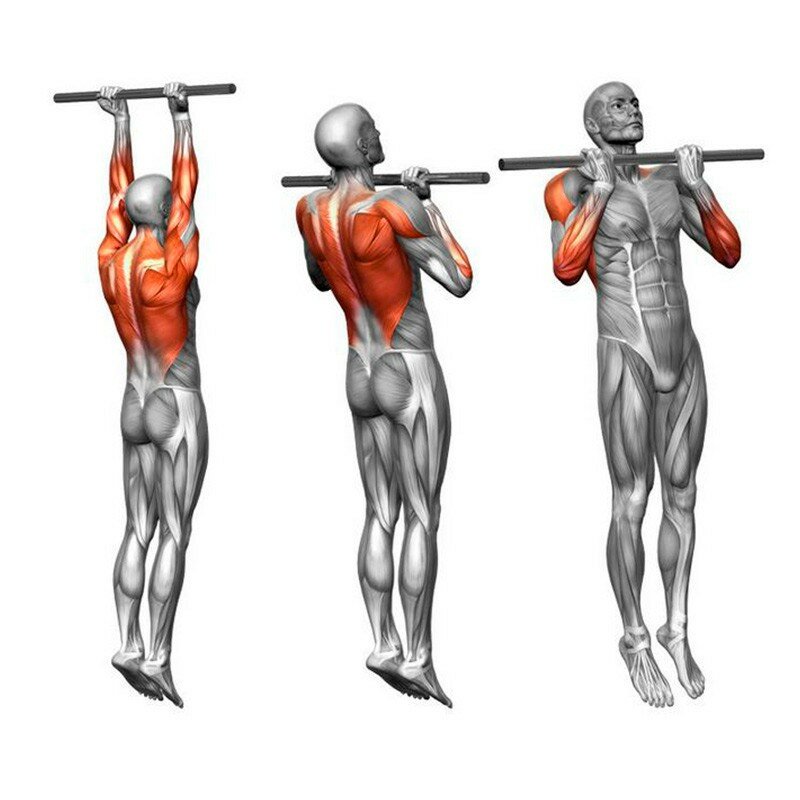
A person who has never pulled up before will take some time and patience to learn how to do this exercise. And, of course, one cannot do without special training and training exercises for the development of strength and endurance.
How to pull up correctly
Before getting acquainted with the lead-up exercises, we will study the technique of performing the classic pull-up.
Pull-ups are divided into two types: by the type of grip and the width of the location of the brushes on the bar.
By grip type:
- straight – palms are directed away from you;
- reverse – palms look at the athlete;
- grip – one hand holds the bar with a direct grip, the other with a reverse grip;
- neutral – palms look at each other
By grip width:
- wide – the arms are wider than the shoulder joints;
- narrow – hands are close to each other;
- middle – arms shoulder-width apart.
To perform the classic pull-up, place your hands shoulder-width apart in a straight grip and hang on the horizontal bar. Without jerking or additional inertia, lift your body while inhaling, contracting the muscles of the arms and back. At the moment when the chin is above the crossbar, exhale and slowly lower yourself to the starting position.
- Overweight
The reason why you should not start sports with pull-ups is extra pounds. They put additional stress on the muscles. In this case, it is better to pay attention to proper nutrition and exercise that is aimed at losing weight. - Poor physical fitness
Underdeveloped main and auxiliary muscles will not allow you to perform a classic pull-up – there simply will not be enough strength, and it is also traumatic. - Incorrect execution
technique It is necessary to work on the technique constantly, bringing it to perfection. Improper exercise performance threatens uneven muscle development, overuse or stretching of joints and ligaments.

5 exercises that will teach you to pull up from scratch
Australian pull-ups
A basic exercise for developing the lats of the back and arms. The difficulty level of the Australian pull-up depends on the height of the bar – the lower the bar is, the harder the exercise is. And depending on the angle of inclination of the body, the load on the muscles changes – the more upright the position, the less the muscles are worked out.
To do this, you will need a crossbar located at the waist level.
We take the starting position – holding with both hands with an average grip on the horizontal bar, lower the body to a horizontal position and rest our heels on the floor.
We raise the body with the help of our hands, until the shoulders touch the horizontal bar, while the back and legs remain in the same plane.
We return to the starting position.
To perform the exercise, make a straight grip on the rings and try to lower your body down parallel to the ground as much as possible. The feet are on the floor.
From the bottom position, we raise the body to shoulder level.
We return to the starting position.
Starting position – standing, legs are already shoulder width apart, knees are bent, back is tilted forward 45 degrees, arms with dumbbells are lowered down.
As we exhale, we raise our arms so that the elbows move along the body, while the body remains motionless. Dumbbells are pulled up to the belt.
On inhalation, we return to the starting position and lower the dumbbells to the middle of the lower leg.
There are two movements in the exercise on the horizontal bar: up and down. A negative pull-up is a downward movement that is done slowly to maximize muscle stress.
Use a bench or chair to do the exercise.
Starting position – we stand on a chair, the chin is at the level of the crossbar. We make a straight grip with our hands.
Slowly, bend your knees and slowly lower your body until your arms are fully extended. Then we take the starting position.
Hanging on a horizontal bar develops the muscles of the back, strengthens the wrists and straightens the posture.
To perform the exercise, we place our hands on the horizontal bar with an average grip. We relax the body, the shoulders are lowered, the neck is stretched, the stomach is tucked up, the legs are together. Breathing is slow, measured.
In this fixed position, tilt your head down so that your chin touches your chest. This will help stretch the upper and middle vertebrae.
When you manage to hang on the horizontal bar for 2-3 minutes, and repeat the rest of the exercises more than 10 times in several approaches – congratulations! Now start doing the classic pull-up.

